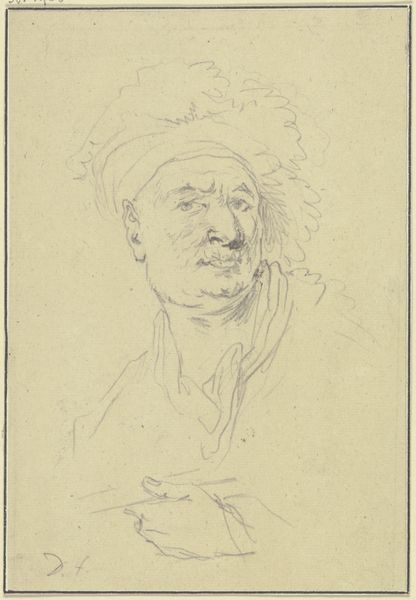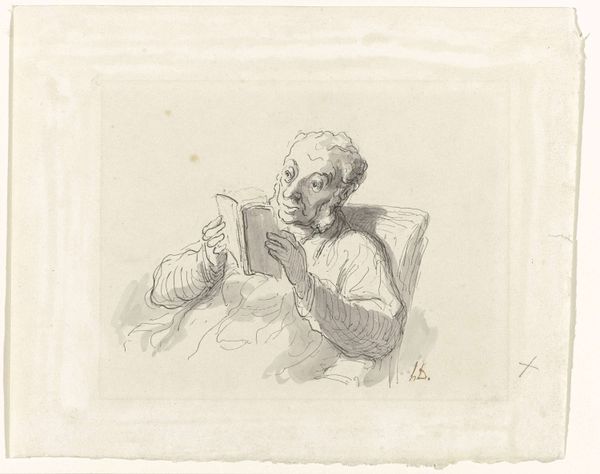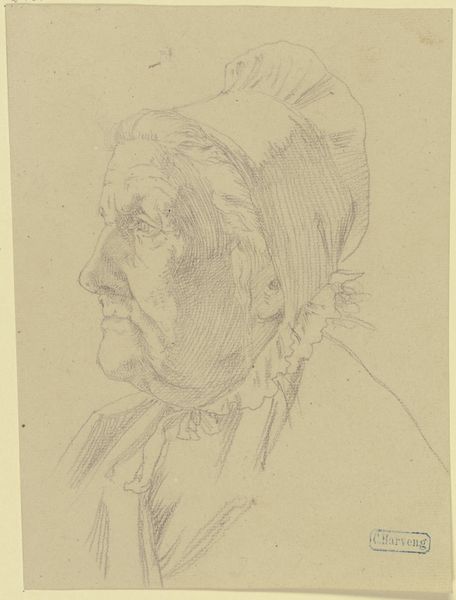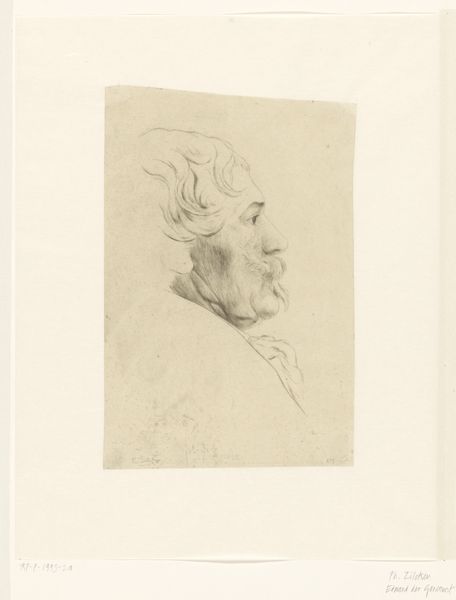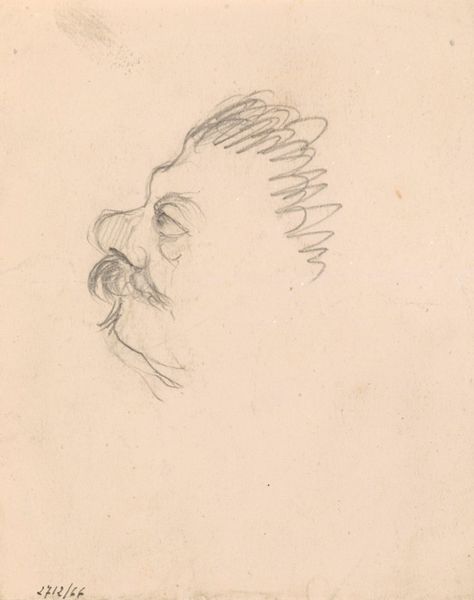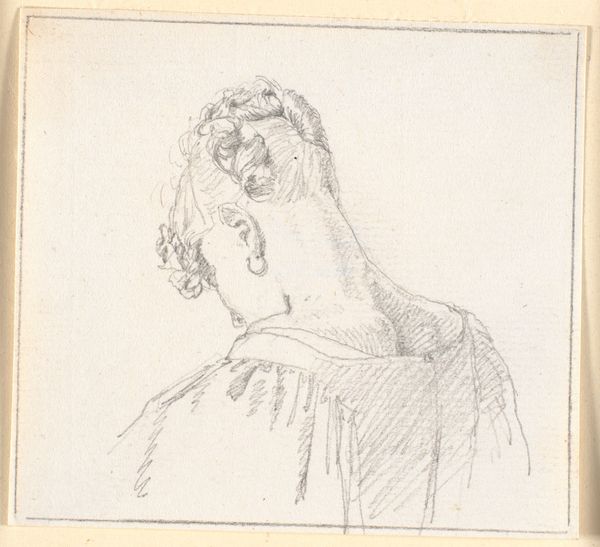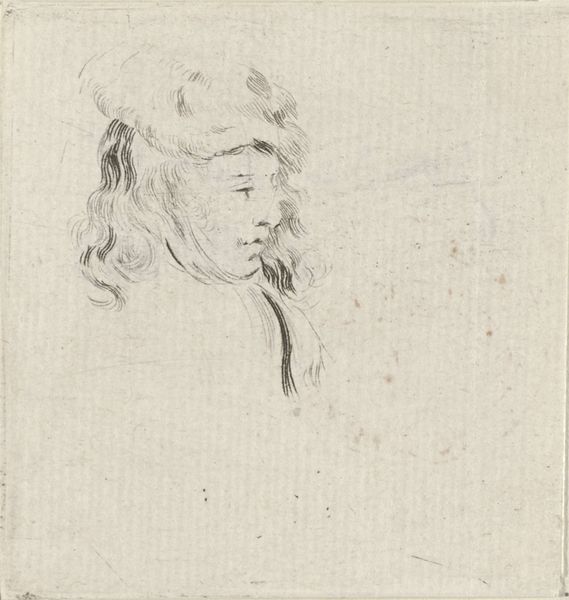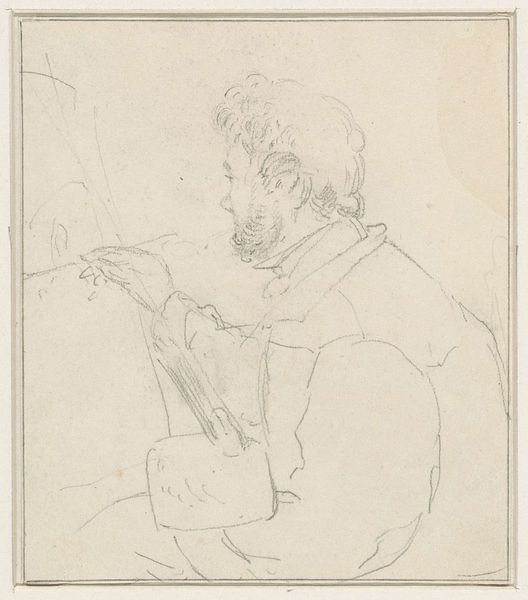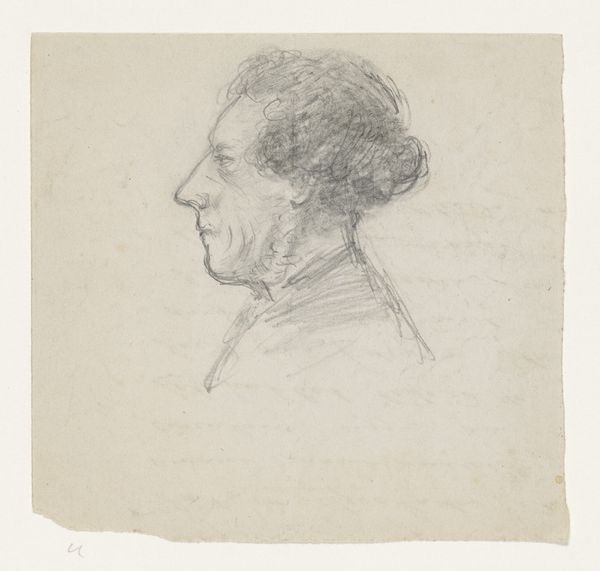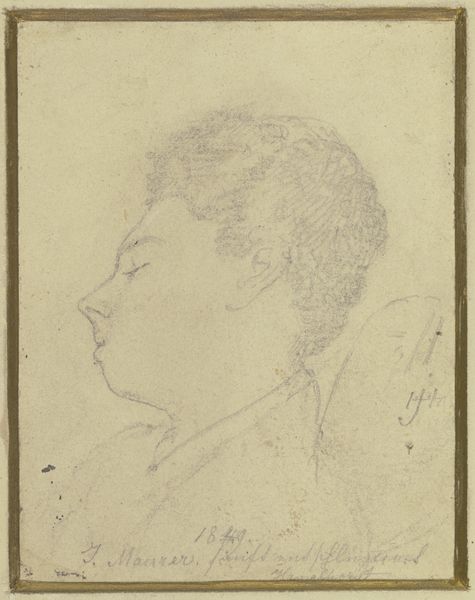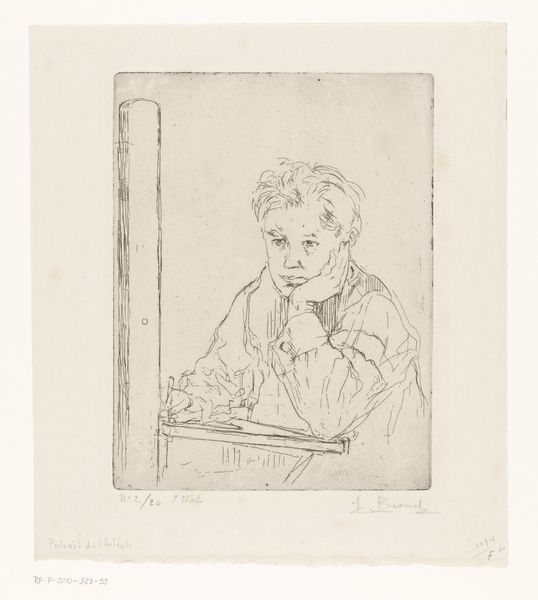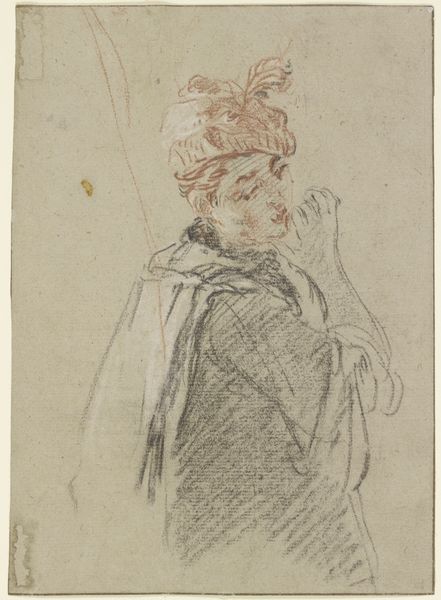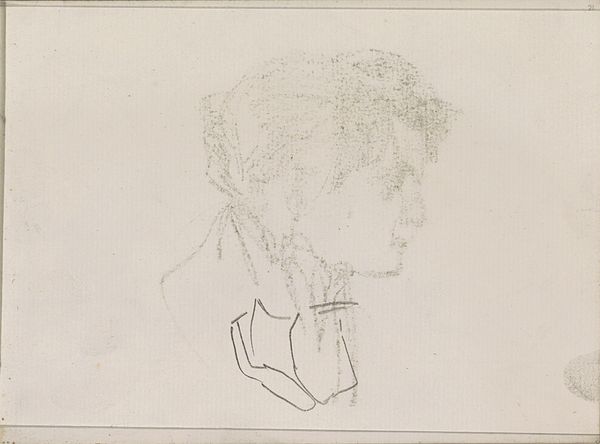
Læsende ung mand, kunstnerens ældste broder, pastor Carl Adolf Købke (1804-1840) ? 1810 - 1848
0:00
0:00
drawing, pencil
#
portrait
#
drawing
#
romanticism
#
pencil
#
portrait drawing
Dimensions: 83 mm (height) x 90 mm (width) (bladmaal)
Curator: What strikes me first about this drawing is its quiet intimacy, almost as if we are intruding on a private moment of contemplation. Editor: I concur. The subject, identified as the artist Christen Købke’s older brother, Carl Adolf, is utterly absorbed. I’m fascinated by how Købke manages to evoke such stillness with a simple pencil drawing, likely sometime between 1810 and 1848. The original now resides in the collection of the SMK, the National Gallery of Denmark. Curator: Indeed. The symbolic weight of a figure deeply engrossed in a book speaks volumes. It suggests a focus on inner life, spiritual contemplation even. Given his brother was a pastor, the act of reading takes on an even deeper dimension, representing not just intellectual pursuit but perhaps a quest for moral and theological understanding. The book itself becomes an emblem. Editor: And within its cultural context, the work resonates with the Romanticism, it reveals its interest in emotion, individuality, and the power of nature as filtered through personal experience. Although, here, Nature may have been substituted by culture, by textual encounter. What might have been the implications, I wonder, if he weren’t absorbed in private contemplation, if his eyes were upon us? Curator: That simple alteration shifts the symbol entirely from inward reflection to societal engagement. Though his averted gaze speaks volumes about his internal, perhaps spiritual world. Editor: Absolutely. The symbolism of withdrawal from the everyday is very much tied to Romantic era ideals of individualism and subjective experience. Artists aimed to portray profound psychological states as statements within their social world. Curator: It's a compelling intersection, I feel. His choice of his older brother suggests not merely the sitter's identity, but speaks more loudly, perhaps, of filial connection. And a quiet acknowledgement that these qualities, so esteemed during that epoch, were perceived as innate familial qualities too? Editor: And further, I would wager the deliberate use of line, and not shading, helps project an austerity to both Carl and Christen that the brothers desired. Curator: Overall, it provides a powerful meditation on knowledge, faith, and the quiet dignity of intellectual pursuit. Editor: I agree. A glimpse into a bygone era of earnest contemplation, all conveyed with the elegant restraint of pencil on paper.
Comments
No comments
Be the first to comment and join the conversation on the ultimate creative platform.
